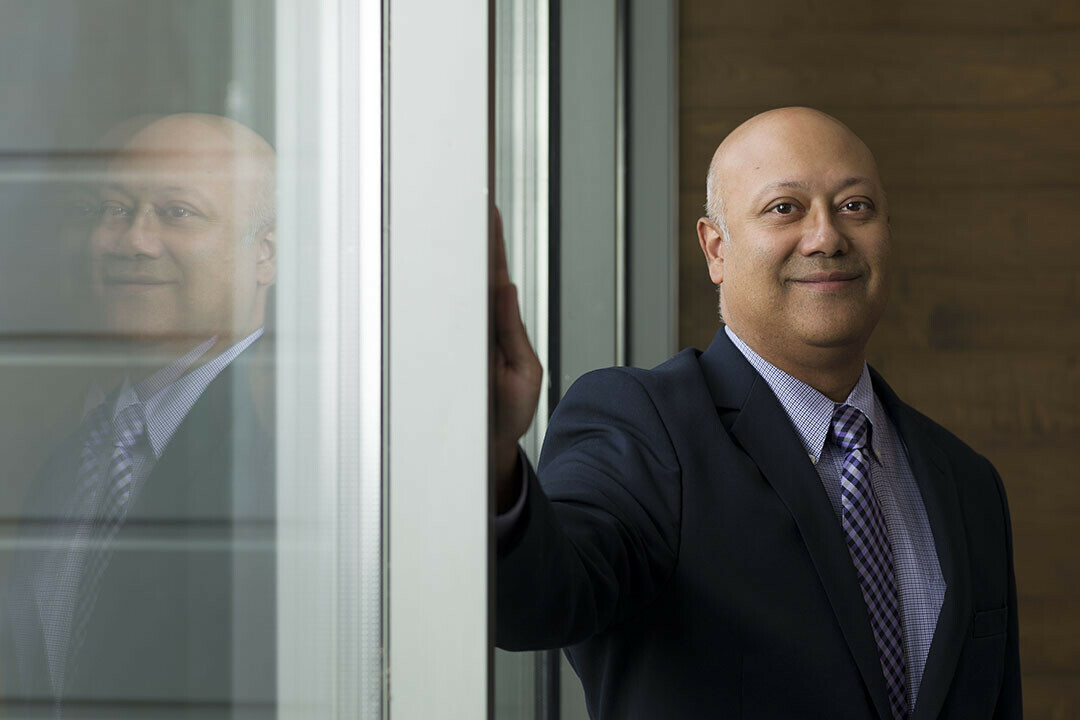Discovering the Genetic Clues of Cancer
top Mayo Clinic doctor will explore cutting-edge diagnosis and treatment in Oct. 3 Eau Claire lecture

While cancer is a topic many of us would prefer to avoid, it is best confronted with knowledge and technology, says a Mayo Clinic physician who studies the genetic components of cancer.
“Cancer is not something that we need to be afraid of,” said Dr. Niloy Jewel Samadder, a gastroenterologist who focuses on hereditary cancer syndromes and endoscopic oncology. “It’s something we need to understand, and understand what a person’s risk is – based on their family, their genetic code, their environment – and how do we prevent it? Or if they develop it, how do we effectively treat it?”
Dr. Samadder, who directs the high-risk cancer clinic at Mayo Clinic in Arizona and was involved in a groundbreaking genetic survey, will deliver the annual Imagine Lecture in Eau Claire on Oct. 3. The lecture – titled “Cancer Genomics: Population Screening to Early Detection to Precision Interception” – is free and open to the public. It will begin at 7pm in Schofield Auditorium on the UW-Eau Claire campus.
REGISTER FOR THE LECTURE BY FOLLOWING THIS LINK.
OUT OF THE BASEMENT
During his medical training as a gastroenterologist, including his residency at Mayo Clinic in Rochester, Minnesota, Dr. Samadder came to realize that genetics would play an increasing role in cancer care.
“I could see that this was going to be a burgeoning and expanding field, where genetics is going to have a very strong role in the treatment of cancer, the prevention of cancer, helping patients guide their decision-making of what cancer prevention or surveillance they should undergo,” he said.
And the subsequent decade-plus in the field has reinforced his conclusion, he said: “I joke that cancer genomics broadly has gone from being in the basement of the cancer center to being in the penthouse.”
So what is the relationship between genetics and cancer? All cancer has some genetic basis, either because it is inherited from your family or because the cancer is caused by a genetic mutation within your cells. Dr. Samadder said about 20% of cancers are highly genetic, having been passed down from previous generations. These are most commonly breast, ovarian, colon, rectal, uterine, and pancreatic cancers as well as melanoma. Another 20 to 25% of cancers are “familial.” While there is no “smoking-gun gene” that causes them, Dr. Samadder said familial cancers are those that occur in people whose relatives have similar cancers. Finally, about half of cancer cases are unexplained, and probably result from a combination of genes, environment, and bad luck, he said.
WEAVING A TAPESTRY
Dr. Samadder has been part of Mayo’s Tapestry DNA Sequencing Research Study, which has mapped portions of the genetic code of more than 100,000 participants. Specifically, Tapestry looked at the exome – the part of an individual’s genome that encodes proteins, which are especially important to disease.
The research screened for three genetic abnormalities – two associated with cancer, one with high cholesterol – and identified more than 1,000 participants who had these DNA markers. More than half of these individuals didn’t know they had these genetic risks, which Dr. Samadder said points to the need for more widespread, easily available genetic testing.
“I think we’re approaching a time in the next several years where some level of genetic sequencing like this will be offered to all populations,” he said.
“I think we’re approaching a time in the next several years where some level of genetic sequencing like this will be offered to all populations.”
Genetic testing can also be used to detect cancer – and its recurrence – early. For example, looking for what is known as circulating tumor DNA – mutated genetic material shed by tumors – can raise an alarm about tumors event when they’re too tiny to show up on conventional scans. This approach, Dr. Samadder said, can allow doctors to treat the cancer before it gains a strong foothold – yet another way that genetic advances can save and extend lives.
“I would encourage community participants to come to this lecture to understand how genomics is revolutionizing cancer prevention and cancer treatment – how you can use your family history, your genetic predisposition, to live a long fruitful life,” he said.
IMAGINATION AND KNOWLEDGE
The Imagine Lecture series was created to honor the legacy of Dr. David Winter, a Mayo Clinic radiologist who died in 2010 at the age of 47.
“He was just an absolutely wonderful person who really cared about patients and what he did and how we delivered care,” Dr. Jason Beckermann, an acute care and trauma surgeon at Mayo Clinic Health System in Eau Claire, said of his late colleague. “He was a guy who always pushed technology. … He was always an advocate for what makes medical care better – things that we now take for granted and do every day.”
Dr. Beckermann, who serves as the chair of education for the health system in northwestern Wisconsin, said the Imagine Lecture has a rich history going back to 2011 of bringing engaging speakers to address both medical and non-medical topics, and Dr. Samadder is no exception.
“He is truly a visionary doing cutting-edge research that is really centered around how do we detect cancer earlier and with less invasive techniques, even before people develop cancer, to identify the people who are at risk,” Dr. Beckermann said.
Imagine Lecture — “Cancer Genomics: Population Screening to Early Detection to Precision Interception” • Niloy Jewel Samadder, M.D., of Mayo Clinic in Arizona • 7-8pm, Thursday, Oct. 3 • Schofield Auditorium, UW-Eau Claire • FREE • Follow this to register for your ticket




















